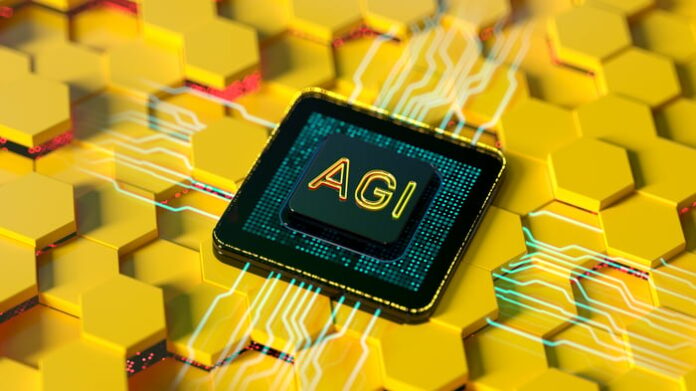Arm Holdings: A Bold New Direction for Chip Design
Arm Holdings (NASDAQ: ARM) has captured significant attention since its public debut in September 2023. Initially priced at $51 per share, Arm’s stock has surged to $159, marking a tripling in value during this period.
Despite Arm’s high valuation of 99 times forward earnings, investors remain optimistic, particularly about the chip maker’s prospects in the data center computing arena. Traditionally strong in smartphones due to their energy efficiency, Arm-based chips are now gaining traction in AI data centers that demand substantial power resources.
Where to invest $1,000 right now? Our analyst team just revealed what they believe are the 10 best stocks to buy right now. Learn More »
A Shift Towards In-House Chip Production
Recently, Reuters reported that Arm is trying to recruit top talent from major clients to start designing its own Arm-branded chips for data centers. Insiders indicate that these new chips could debut by this summer. Following this news, the Financial Times disclosed that Meta Platforms (NASDAQ: META) is set to be the first customer for Arm’s upcoming chip. Additionally, there are rumors that Arm is considering acquiring the private chip designer Ampere to support this initiative.
Until now, Arm’s business model primarily involved licensing its architecture to other manufacturers. This typically involves upfront fees, ranging between $1 million and $10 million, along with a royalty fee of 1% to 2% of each Arm-based chip’s sales revenue. Notable customers include Nvidia (NASDAQ: NVDA), which uses Arm tech for its Grace CPUs, and Apple, which develops its own Arm-based chips for smartphones and PCs.
Arm’s leadership, including CEO Rene Haas and Softbank (OTC: SFTB.Y) Chairman Masayoshi Son, are clearly seeking greater profit potential beyond licensing. Softbank still holds about 90% of Arm, giving it significant influence over strategic decisions.
Capitalizing on AI Growth
Masayoshi Son’s ambition appears to be linked to a burgeoning opportunity in the AI sector. He has made bold predictions about AI, suggesting that “artificial super-intelligence” could emerge by 2035, requiring a staggering $9 trillion in investments. Notably, he remarked:
I have predicted it would take 400GW of AI data center power, that’s bigger than the total US electricity supply, and it will require 200 million chips. … The cumulative capex is $9 trillion — how do you recoup? It’s too much investment for many people’s view, but I say it’s still very reasonable capex: $9 trillion is not too big, maybe too small.
Furthermore, in early 2025, Son announced a $100 billion AI data center project called Stargate, which could even expand to $500 billion. There are also reports of Softbank’s interest in directly investing in OpenAI.
Given this perspective on AI, Son’s desire for a deeper involvement makes sense.

Image source: Getty Images.
Potential Risks of a Bold Strategy
Son is clearly enthusiastic about the prospects of AI and the investments tied to achieving advanced artificial intelligence. However, shifting to chip design introduces significant risks.
Competing against its own customers could diminish Arm’s attractiveness relative to x86 architecture alternatives. Many tech companies prefer to partner with neutral firms for chip manufacturing. For example, Arm customers generally rely on Taiwan Semiconductor Manufacturing for chip production, as it does not compete with its clients.
If Arm begins producing its own chips, third-party manufacturers might pivot to designing custom x86 chips, similar to how Amazon (NASDAQ: AMZN) announced plans in September 2024 for a proprietary Xeon processor based on the x86 architecture.
While Arm-based chips excel in energy-efficient applications, recent developments in x86 technology have made these competitors more energy-conscious, potentially challenging Arm’s advantages.
Is This a Response to Past Mistakes?
Interestingly, Softbank sold its entire Nvidia stake for $4 billion in 2019—an amount that would now be worth over $150 billion. Additionally, when ChatGPT made headlines in late 2022, Softbank lacked significant investments in AI.
This leads to speculation that Son might be steering Arm toward this new path to compensate for previous errors. Making strategic decisions based on past failures or a fear of missing out might not yield the best results.
Masayoshi Son’s history of high-risk decisions is evident, and Arm’s venture into in-house chip production represents a considerable gamble, which could have both positive and negative outcomes. Investors in Arm should stay alert to these developments, particularly regarding the acceptance of the new Arm chip and whether existing clients lean towards developing x86 architectures.
Your Opportunity Awaits
Ever feel like you missed out on investing in top-performing stocks? There’s good news.
Our analysts have identified a select group of companies they believe are on the verge of significant growth. If you’re worried about missing your chance to invest, now may be the perfect time to act. The figures speak for themselves:
- Nvidia: Invested $1,000 when we doubled down in 2009 would now be worth $360,040!*
- Apple: Invested $1,000 when we doubled down in 2008 would now be worth $46,374!*
- Netflix: Invested $1,000 when we doubled down in 2004 would now be worth $570,894!*
At this moment, we’re issuing alerts for three exceptional companies, representing a rare investment opportunity.
Learn more »
*Stock Advisor returns as of February 3, 2025
Randi Zuckerberg, a former director of market development and spokeswoman for Facebook and sister to Meta Platforms CEO Mark Zuckerberg, is a member of The Motley Fool’s board of directors. John Mackey, former CEO of Whole Foods Market, an Amazon subsidiary, is a member of The Motley Fool’s board of directors. Billy Duberstein and/or his clients have positions in Amazon, Apple, Meta Platforms, and Taiwan Semiconductor Manufacturing. The Motley Fool has positions in and recommends Amazon, Apple, Meta Platforms, Nvidia, Oracle, and Taiwan Semiconductor Manufacturing. The Motley Fool has a disclosure policy.
The views and opinions expressed herein are the views and opinions of the author and do not necessarily reflect those of Nasdaq, Inc.

